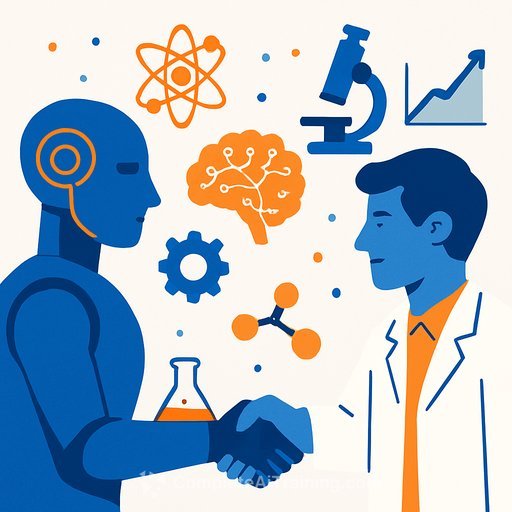Mistral launches a science unit to apply AI across core research fields
Mistral is creating a new division focused on applying AI to scientific discovery across maths, physics, chemistry, biology and materials science. The team will run independent research projects aimed at solving concrete problems and creating business value for industry partners.
The company plans to hire around 10 specialists for the unit, with two roles already posted. Cofounder and chief scientist Guillaume Lample says the company is now in a position to invest in ambitious scientific work, on top of its commercial progress.
Context: From open models to enterprise impact
Founded in 2023, Mistral builds open-source large language models meant to compete with US heavyweights like OpenAI and Meta. It has raised nearly €2.8bn and recently reached an €11.7bn valuation.
The business targets enterprise clients. Earlier this year it signed a €100m multi-year agreement with shipping group CMA CGM to explore new AI use cases and develop custom models and agents. Dutch semiconductor leader ASML led Mistral's €1.7bn Series C and formed a strategic partnership to apply Mistral's tools to future products and services.
Why this matters for research teams
- Access to state-of-the-art model development paired with domain expertise can shorten cycles from idea to tested result.
- Enterprise-grade deployment bridges lab prototypes and real-world constraints in manufacturing, drug discovery and finance.
- Tighter feedback loops with industrial partners keep research grounded in measurable outcomes.
Initial focus areas
- Materials and lithography: Aligns with ASML's challenges in materials science and applied mathematics, where advances impact throughput, yield and process control.
- Protein folding and design: Following progress in structure prediction (see AlphaFold's results in Nature), improved generative modeling could accelerate hit identification and lead optimization.
- Time series forecasting: Better modeling for non-stationary, sparse and multi-scale signals relevant to finance, operations and energy systems.
- Math and physics problems: Symbolic reasoning, theorem proving and simulation surrogates that reduce compute and speed up experimentation.
How Mistral says it will execute
The new unit will identify high-value scientific problems where AI can make a measurable difference, then develop prototypes with a path to production. According to Lample, the goal is to provide advanced solutions that stand up to scrutiny in industry settings.
The move builds on Mistral's commercial footing: stable revenue from enterprise contracts funds longer-horizon research, while deployments with customers stress-test models against real data and constraints.
What to watch next
- Hiring pace and the profiles brought in (e.g., computational chemists, applied physicists, scientific ML engineers).
- Benchmarks that show improvements over established baselines in materials modeling, structure prediction and long-horizon forecasting.
- Joint publications or patents with partners like ASML, and evidence of deployment beyond proofs of concept.
- Open-source releases that help the broader research community reproduce and extend results.
Practical takeaway
If you lead R&D or data science, identify one or two scientific bottlenecks where model-driven approaches can meaningfully compress time or cost. Prioritize problems with clear metrics, accessible data, and a feasible path to validation-then pilot with a small, cross-functional team.
Upskill your team: For researchers and technical leaders building AI capability, explore role-based learning paths at Complete AI Training.
Your membership also unlocks:






